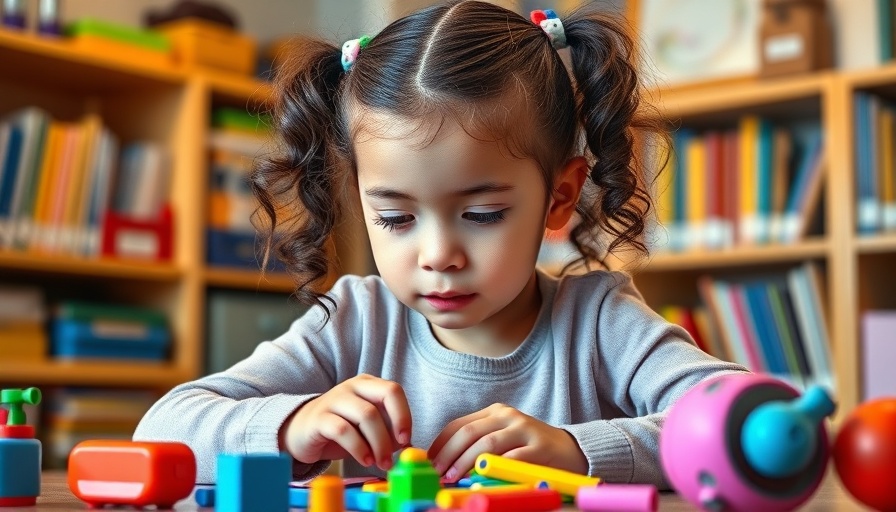
Unlocking the Power of Mindfulness: Lessons from First Graders
In a world where anxiety and emotional stress are quite common, the introduction of mindfulness in educational settings is a breath of fresh air. Recent insights from first graders Elijah and Romir at the Seattle non-profit Space Between exemplify how integrating mindfulness can foster emotional resilience in young learners. Their inspiring approaches can provide valuable lessons to adults facing daily challenges.
The Zig-Zag Breath: Simple Yet Effective
Romir introduces the Zig-Zag Breath as a powerful yet uncomplicated mindfulness technique. He explains that by moving your head in a zig-zag shape while breathing out calmly, not only does it warm the body, but also helps alleviate discomfort. This playful yet effective method allows children to express their feelings, contributing greatly to emotional balance.
Square Breathing with Elijah: Drawing Calm Into Focus
Another powerful exercise comes from Elijah, who asks us to imagine drawing a square with our finger while focusing on our breath. He guides us through a series of inhales and exhales that align with the lines of the square, inviting mindfulness into our thought process. This exercise shows us how deep, intentional breathing can develop greater awareness and soothe our nervous system. By encouraging children to physically engage with meditation, Elijah demonstrates that mindfulness can be an active exercise rather than a passive one.
Mindfulness for All: Why It Matters
Teaching mindfulness to children translates into tools they can carry into adulthood. Research consistently shows that mindfulness practices enhance overall well-being and emotional health. According to studies, children and teens who engage in mindfulness are less likely to experience anxiety, depression, and emotional instability.
The positive impacts of mindfulness extend to teachers and parents as well. Kathy Marvel, a first-grade teacher, highlights the importance of maintaining focus in today’s increasingly distracted world, where children spend an average of six hours per day in front of screens. By equipping kids with mindfulness strategies, we can help them counteract these distractions, fostering a culture of attentive learning.
Incorporating Mindfulness in the Classroom
From morning meetings that encourage open dialogue about emotions to mindfulness strategies that help manage stress, teachers like Kathy are reshaping educational environments. They understand that before children can thrive academically, their emotional needs must be met. One engaging method involves using guided activities and resources like Calm.org and GoNoodle to facilitate mindfulness practices within the classroom.
Valuable Insights: Perspective from Experts
The feedback from both Elijah and Romir aligns with broader educational trends observed by experts in the field. Kathy notes how the integration of mindfulness encourages children to own their behaviors, setting the stage for both personal growth and classroom harmony.
As the understanding of emotional intelligence grows, more innovative techniques for teaching mindfulness emerge. These might include gratitude circles or breathing exercises that allow kids to work through challenges while promoting a supportive classroom climate.
Practical Tips for Parents and Educators
For those eager to introduce mindfulness into their classrooms or homes, tools like breathing posters, calming jars, and structure in routines can enrich daily interactions. Allowing for reflection time and focused breathing not only aids in managing stress but fosters a sense of self-awareness in both children and adults.
Mindfulness creates an opportunity for dialogue about feelings and emotional strategies, enabling kids to express themselves without fear of judgment. Teachers can encourage children to communicate their needs, reinforcing the idea that emotional health is just as important as academic proficiency.
Encouraging a Lifelong Practice
As we learn from the experiences of young children, incorporating mindfulness into our lives can cultivate patience, awareness, and emotional resilience. It’s never too late to start practicing mindfulness, whether through yoga, meditation, or simple breathing exercises. By embodying these principles ourselves, we model mindfulness for future generations.
Wondering how to implement mindfulness in your life or community? By engaging with simple practices inspired by children, you can rediscover the joy and calm that mindfulness brings.
 Add Row
Add Row  Add
Add 




Write A Comment